Does regrowth always start as thin hairs? Do hairs thicken as they grow or do they need to shed and then come back to get thicker? Chat 6/29/2025
Hair regrowth can start as thin hairs that may thicken over time, with treatments like finasteride and minoxidil showing varied results. Some users report initial shedding followed by thicker regrowth, while others experience mixed outcomes in different areas.
View this post in the Community →
Similar Community Posts Join
5 / 1000+ resultscommunity 18mo progress - topical fin/min + oral min/dut
The user experienced significant hair regrowth using topical finasteride/minoxidil and oral minoxidil/dutasteride, with some mild side effects that diminished over time. They plan to add microneedling to their regimen and have seen hair shedding cycles every six months, followed by thicker regrowth.
community 19M Am i a minoxidil hyper responder?
A 19-year-old using topical minoxidil and dutasteride reports significant hair growth and shedding. Minoxidil caused new facial hair growth, and the user hopes for thicker hair regrowth.
community Sept 2020 to June 2023. First 13 months on FIN. Now 20 months on DUT. Also use topical 5% Minoxidil. Turning 44 in four months.
The post discusses a user's hair regrowth journey from September 2020 to June 2023, using treatments like Finasteride, Dutasteride, and 5% Minoxidil. The user shares progress pictures, discusses the effects of the treatments, and answers questions about his routine and experiences.
community 60-day progress with Minoxidil
A user shared a 60-day progress update on hair regrowth using only 5% Minoxidil foam once daily. Others suggested adding finasteride to address the underlying cause of hair loss and maintain long-term results.
community Testosterone and hair loss seeming irrelevance
The conversation is about the role of testosterone in hair loss and the effectiveness of different treatments. The conclusion is that DHT is the main culprit for hair loss, and finasteride has been proven to work long-term in maintaining and regrowing hair. Testosterone may have a minor effect, but it is not the primary cause of hair loss.
Related Research
6 / 1000+ results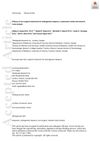
research Efficacy of Non-Surgical Treatments for Androgenetic Alopecia: A Systematic Review and Network Meta-Analysis
Low level laser therapy works best for hair loss, followed by PRP, finasteride, and minoxidil.
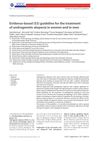
research Evidence-Based Guideline for the Treatment of Androgenetic Alopecia in Women and Men
Use minoxidil for hair loss; finasteride and dutasteride for men, dutasteride for women.
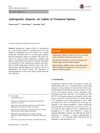
research Androgenetic Alopecia: An Update Of Treatment Options
Minoxidil is the only FDA-approved topical drug for treating male or female pattern hair loss, and other medications like finasteride and dutasteride can also increase hair growth.

research Male Androgenetic Alopecia: Medical and Surgical Treatments
Finasteride effectively treats male hair loss, increasing length and thickness.
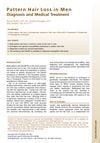
research Pattern Hair Loss in Men: Diagnosis, Genetic Link, Clinical Features, and Treatments
Male pattern hair loss caused by follicular miniaturization; early diagnosis and treatment can reduce psychological burden.
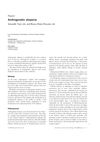
research Androgenetic Alopecia: Causes, Diagnosis, and Treatment Options
Hair loss from genetics and hormones can be treated with drugs or surgery.